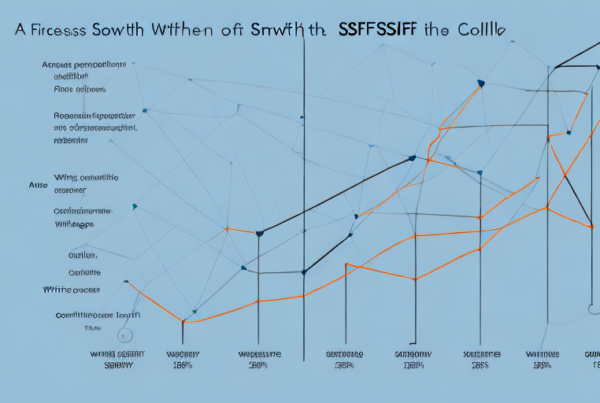Australia has always been a nation that values self-sufficiency and entrepreneurship. So, it should come as no surprise that the trend of self-managed super fund (SMSF) businesses is gaining momentum across the country. But why are Australians embracing this new approach to managing their retirement savings, and what are the benefits and challenges of this type of fund?
Understanding Self-Managed Super Funds (SMSFs)
What is a Self-Managed Super Fund?
A self-managed super fund (SMSF) is a type of superannuation fund in which the members are also the trustees. This means that the members are responsible for managing and investing the fund’s assets themselves. The SMSF must be set up for the sole purpose of providing retirement benefits to its members, and it must comply with strict government regulations.
One of the advantages of an SMSF is that it allows you to have greater control over your retirement savings. You can choose which assets to invest in, and you can make changes to your investment strategy as your circumstances change. This can be particularly useful if you have specific investment goals or if you want to invest in assets that are not available through traditional super funds.
However, it’s important to remember that running an SMSF also comes with responsibilities. As a trustee, you are responsible for ensuring that the fund complies with all relevant laws and regulations. This includes keeping accurate records, preparing financial statements, and ensuring that the fund’s investments are made in accordance with the fund’s investment strategy.
How do SMSFs differ from traditional super funds?
Unlike traditional super funds, SMSF members have complete control over their investments and determine how their contributions and retirement savings are invested. This gives them more flexibility and control over their retirement destiny. Traditional super funds, on the other hand, are managed by professional trustees, who make investment decisions on behalf of the fund’s members.
Another key difference between SMSFs and traditional super funds is the level of fees. SMSFs typically have higher fees than traditional super funds, as there are additional costs associated with managing the fund yourself. However, these fees may be offset by the potential benefits of having greater control over your investments.
The benefits and risks of SMSFs
One of the key benefits of an SMSF is the greater choice and flexibility it provides. SMSFs can invest in a wider range of assets, including shares, property, and even artwork, subject to certain legal restrictions. This makes it possible for SMSF members to tailor their investments to suit their individual needs and risk profile.
However, there are also risks associated with SMSFs. Because the members are responsible for managing and investing the fund’s assets, they need to have a thorough understanding of investment markets and regulations. Without the necessary skills and knowledge, there is a risk that SMSF members may make poor investment decisions, which could affect the value of their retirement savings.
It’s also important to note that SMSFs are not suitable for everyone. They require a significant amount of time and effort to manage, and may not be cost-effective for those with smaller balances. Additionally, SMSFs are subject to strict regulations, and failure to comply with these regulations can result in significant penalties.
In summary, SMSFs can be a powerful tool for those who are willing to take on the responsibilities and risks associated with managing their own superannuation fund. However, it’s important to carefully consider your options and seek professional advice before deciding whether an SMSF is right for you.
The Growing Popularity of SMSFs in Australia
Recent trends in SMSF adoption
The popularity of self-managed super funds (SMSFs) in Australia has been steadily growing over the past decade. According to data from the Australian Taxation Office (ATO), as of June 2020, there were over 1.1 million SMSF members in Australia, representing 21% of the total superannuation market.
One of the reasons for this growth is the flexibility that SMSFs provide. Members can choose to invest in a wide range of assets, including property, shares, and managed funds. This flexibility allows them to tailor their investments to their individual needs and goals.
Demographics of SMSF users
The bulk of SMSF users are between the ages of 35 and 64. They are typically well-educated, high-income earners who want greater control over their retirement savings. However, there has been a recent trend towards younger Australians starting SMSFs, with many people in their 20s and 30s recognizing the benefits of taking control of their retirement savings early.
Younger Australians are often more tech-savvy and comfortable with online platforms, which makes managing an SMSF more accessible to them. They also have more time to build their retirement savings, which means they can take a long-term approach to investing.
Factors driving the shift towards SMSFs
There are several factors driving the trend towards self-managed super fund businesses. One of the biggest is the desire for greater control over investments and investment returns. SMSF members can invest directly in assets they believe are going to perform well, without having to rely on fund managers. This allows them to tailor their investments to their risk profile and investment goals.
In addition to greater control, SMSFs also offer greater transparency. Members can see exactly where their money is invested and how it is performing. This level of transparency is not always available with traditional superannuation funds.
Another key factor is the rise of low-cost online trading platforms, which have made it easier and more affordable for individuals to invest directly in the stock market and other assets. This has helped to level the playing field for SMSF members, giving them access to the same investment opportunities as professional fund managers.
Furthermore, SMSFs offer greater flexibility when it comes to estate planning. Members can choose who will receive their superannuation benefits when they pass away, which can be particularly important for those with complex family structures.
Overall, the growing popularity of SMSFs in Australia can be attributed to the desire for greater control, transparency, and flexibility when it comes to retirement savings. As more Australians become aware of the benefits of self-managed super funds, we can expect to see continued growth in this sector.
Benefits of Running an SMSF Business
Increased control over investments
One of the biggest benefits of running an SMSF business is the increased control it gives you over your investments. You can choose which assets you invest in, and you have full visibility over where your money is going. This gives you the flexibility to take advantage of investment opportunities that may not be available through traditional super funds.
For example, if you have a particular interest in a specific industry or sector, you can invest in companies that operate within that industry or sector. This level of control allows you to tailor your investments to your interests and preferences, potentially leading to better investment outcomes.
Furthermore, you can also choose to invest in assets that align with your personal values and ethical beliefs. For instance, if you are passionate about renewable energy, you can invest in companies that operate within that space.
Potential for higher returns
Another benefit of running an SMSF business is the potential for higher investment returns. Because you have full control over your investments, you can take advantage of market opportunities and quickly capitalize on trends. This can lead to higher investment returns over the long term.
Moreover, SMSF businesses also have the ability to access a wider range of investment options, such as direct property investments, which can provide higher returns compared to traditional investment options.
However, it’s important to note that with increased control comes increased responsibility. It’s crucial to ensure that you have a solid investment strategy in place and that you are making informed investment decisions.
Tax advantages and flexibility
Another benefit of SMSF businesses is the tax advantages they offer. SMSF members are able to take advantage of certain tax breaks and concessions that are not available through traditional super funds.
For instance, SMSFs offer the ability to claim tax deductions on certain expenses, such as insurance premiums and investment-related costs. Additionally, SMSFs offer more flexibility in terms of how you can structure your investments, which can help to minimize tax liabilities.
Furthermore, SMSFs also offer greater flexibility in terms of how you can access your super savings. For instance, you can choose to receive your super benefits as a lump sum, income stream, or combination of both.
Overall, running an SMSF business can provide a range of benefits, including increased control over investments, potential for higher returns, and tax advantages and flexibility. However, it’s important to seek professional advice before making any investment decisions and to ensure that you are complying with all relevant regulations and requirements.
Challenges and Responsibilities of SMSF Business Owners
Legal and regulatory compliance
One of the biggest challenges of running an SMSF business is the need to comply with strict government regulations. SMSF members need to be familiar with the rules and regulations governing SMSFs, and ensure that they are meeting their legal obligations. Failure to comply with these regulations can result in penalties, fines, or even legal action.
It is important for SMSF business owners to stay up-to-date with any changes to regulations and legislation that may affect their operations. This means regularly reviewing their compliance policies and procedures, and seeking professional advice when necessary.
Additionally, SMSF business owners must ensure that they are keeping accurate records and maintaining proper documentation. This includes keeping track of financial transactions, preparing financial statements, and filing tax returns on time.
Time commitment and management
Another challenge of running an SMSF business is the time commitment required. Managing an SMSF can be time-consuming, requiring members to stay up-to-date with market trends and economic conditions. Additionally, members need to keep detailed records and maintain accurate financial statements in order to meet legal requirements.
It is important for SMSF business owners to have a solid understanding of their investment strategy and to regularly review their portfolio. This means taking the time to research and analyze investment opportunities, and making informed decisions based on market trends and economic conditions.
Effective time management is also crucial for SMSF business owners. This means prioritizing tasks, delegating responsibilities where appropriate, and setting realistic goals and deadlines.
Balancing risk and reward in investment strategies
Finally, managing an SMSF business requires a delicate balance between risk and reward. While SMSFs offer greater control over investment decisions, there is also greater risk involved. SMSF members need to balance the potential for higher investment returns with the need to protect their retirement savings and minimize risk.
One way to manage risk is to diversify the SMSF’s investment portfolio. This means investing in a variety of asset classes, such as stocks, bonds, and real estate, to spread risk and minimize potential losses.
Another way to manage risk is to regularly review and adjust the SMSF’s investment strategy. This means regularly assessing the performance of investments and making changes where necessary to ensure that the SMSF’s investment goals are being met.
Ultimately, managing an SMSF business requires a commitment to ongoing education and professional development. SMSF business owners should seek out opportunities to learn and grow their knowledge, and should be prepared to adapt to changes in the regulatory and investment landscape.
In Conclusion
The trend towards self-managed super fund businesses is growing in Australia, as people recognize the benefits of greater control over their retirement savings. SMSFs offer greater investment flexibility and the potential for higher returns, but they also come with greater responsibility and risk. To be successful in managing an SMSF, members need to have a thorough understanding of investment markets and regulations, be willing to commit the necessary time and resources, and be able to balance risk and reward in their investment strategies.




